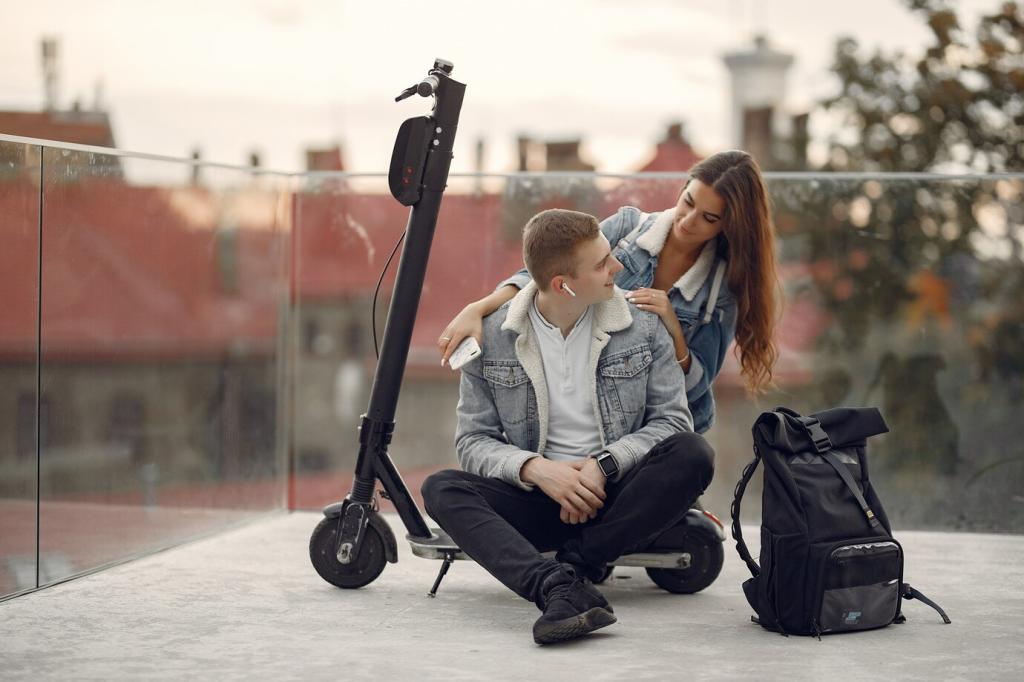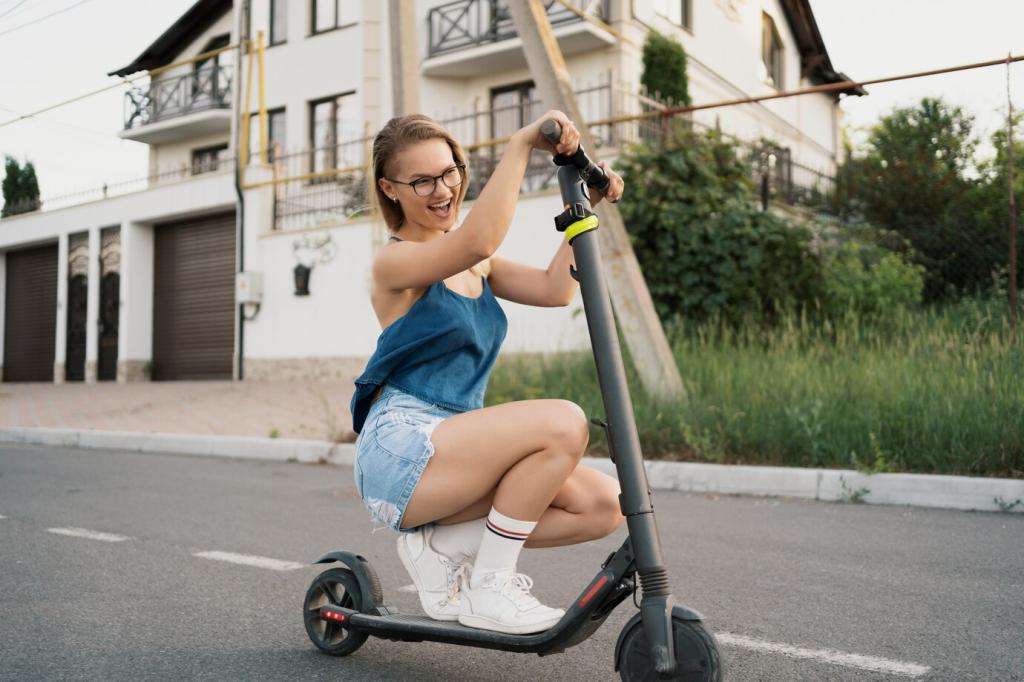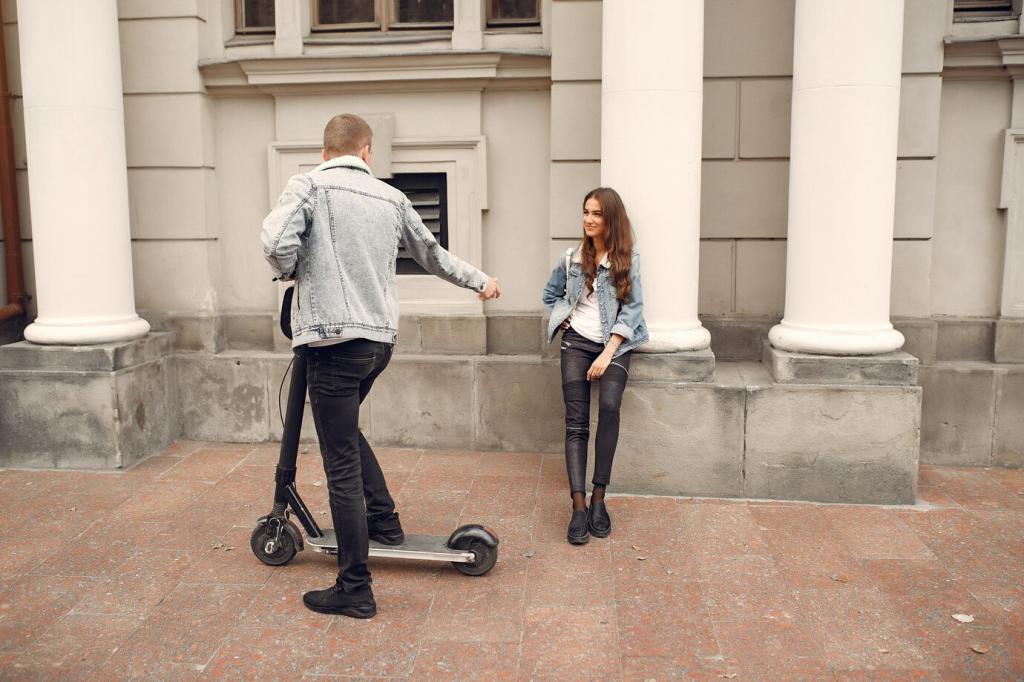Impact of Innovations on Scooter Urban Mobility
From Prototype to Pavement: Innovations Steering the Scooter Era
Lighter frames, regenerative braking, swappable batteries, and puncture-resistant tires have turned scooters from fragile novelties into durable, city-ready tools. Have you noticed longer range or smoother braking lately? Share your experience and help others pick better rides.


From Prototype to Pavement: Innovations Steering the Scooter Era
Geofencing slows speeds near schools, computer vision flags unsafe sidewalks, and IoT locks deter theft while enabling seamless rentals. If your route was auto-slowed for safety, did it feel helpful or frustrating? Comment and compare stories.
Safety, Reimagined by Design and Data
Dual braking, brighter 360-degree lighting, wider decks, and grippier tires reduce common crash scenarios, especially at night or on wet surfaces. Which small safety upgrade made the biggest difference for your confidence? Share to guide new riders.
Safety, Reimagined by Design and Data
Riders like Maya in Barcelona report fewer near-misses after updates introduced predictive slowing on downhill segments and audible alerts near busy crossings. Have assistance features ever nudged you to ride safer without feeling policed?

Data-Driven Cities: Turning Telemetry into Better Streets
Aggregated GPS traces show where riders actually travel, not just where lanes exist. In many districts, heatmaps justified extending protected lanes by a few critical blocks. Would a tiny gap closure change your daily ride? Tell us which segment.
Sustainability in Motion: Batteries, Repairs, and Operations
Longer-lasting batteries and responsible recovery
Swappable packs reduce downtime and consolidate charging logistics. Improved battery management lowers stress and extends lifespan, while certified recycling recovers valuable materials. Have you seen swap stations in your neighborhood? Tell us how they’re working.
Repairability that keeps fleets rolling
Modular components let mechanics replace stems, controllers, or fenders in minutes, cutting waste and cost. A well-maintained scooter can serve thousands of trips. What repair-friendly design would you prioritize if you ran a fleet?
Smarter operations for fewer van miles
Dynamic rebalancing uses predictive demand to position scooters without unnecessary truck trips. Nighttime charging hubs and e-cargo support reduce emissions further. Share your ideas for where rebalancers should stage scooters in your area.


Equity and Access: Making Innovation Work for Everyone
Equity zones, minimum service levels, and community hiring ensure availability beyond downtowns. When scooters reliably reach outer districts, commutes shrink and opportunities grow. Which neighborhoods around you most need consistent coverage?
Equity and Access: Making Innovation Work for Everyone
Seated scooters, cargo platforms, and adjustable stems open mobility to more bodies and uses. Clear audio cues and high-contrast interfaces help low-vision riders navigate confidently. What adaptive feature would help someone you know ride safely?
Commuting and Commerce: The Practical Upside of Innovation
Real-time transit integration suggests scooter routes that meet your train with seconds to spare. Docking near station entrances reduces clutter and sprinted transfers. How closely do your scooter rides align with transit schedules? Share your best sync.


Commuting and Commerce: The Practical Upside of Innovation
Better parking corrals and safer crossings increase spontaneous visits to cafes and shops. Merchants near protected lanes often report steadier footfall. Which corridor in your city would benefit most from scooter-friendly design?

Vehicle-to-everything and lane-level intelligence
V2X experiments let scooters sense signals and warn riders about cross-traffic or unexpected hazards. Combined with lane-level positioning, cues can prevent risky turns. Would you opt into smart alerts if they cut crashes without constant notifications?
Better parking through guidance and gentle enforcement
Curbside beacons and camera-enabled docks guide riders to compliant spots, reducing clutter and complaints. Credits reward good behavior; repeat misparks trigger coaching. Where should your city pilot smarter parking next? Nominate a block.
Weather-aware routing and resilient fleets
Sensors detect slick surfaces, apps reroute to safer streets, and components resist corrosion. Battery preconditioning protects range on cold mornings. Tell us your toughest weather ride and what tech would have helped most.
